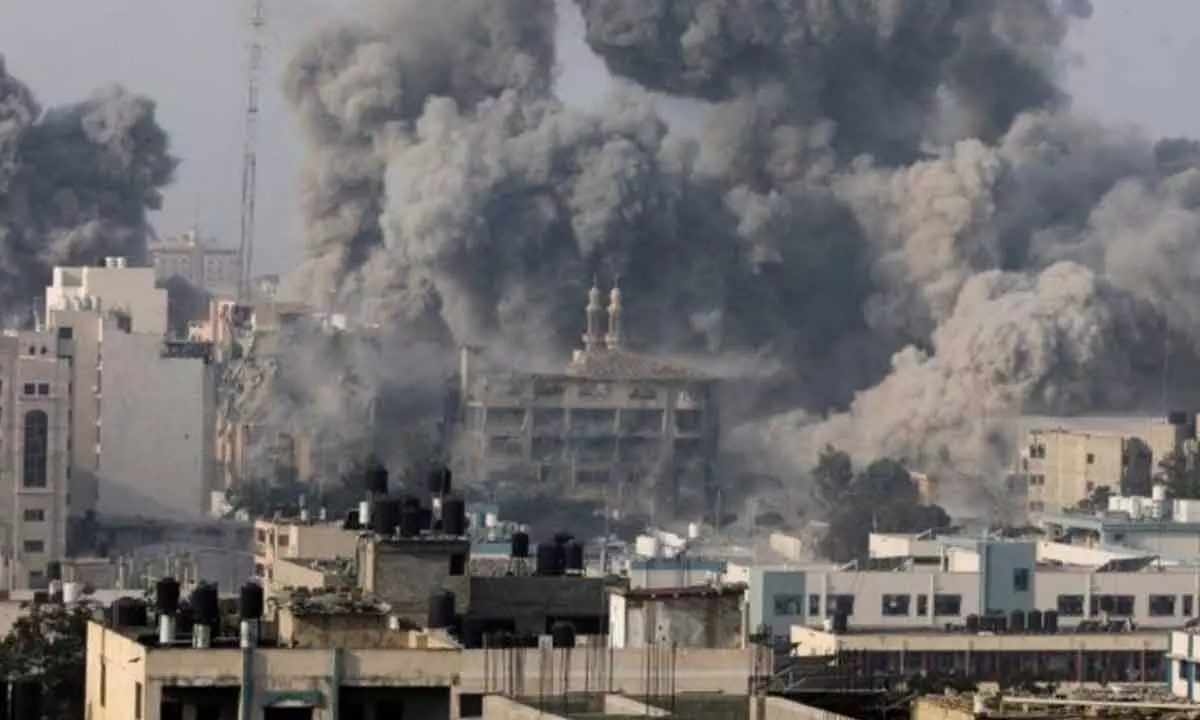Hamas-Israel war has major repercussions for India and the world
IMF has hiked the growth forecast for India from 6.1 to 6.3 per cent
image for illustrative purpose

Despite these external headwinds, domestic economic indicators are pointing towards a bright outlook in terms of growth in 2023-24. The initial reaction to the war playing out in West Asia was a fall in domestic stock markets. But these have now recovered with buoyant corporate results expected for the second quarter of the current fiscal
The impact of the Israel-Hamas war on the global economy is difficult to assess immediately. It is still early days but much will depend on the time span of the conflict and the number of players that are ultimately drawn into it.
As it is, the world economy is limping along rather than sprinting, according to the latest economic outlook of the International Monetary Fund (IMF). This is the scenario even before it has been able to assess the ripple effects of the West Asian conflict that has already spurred a rise in crude oil prices.
No wonder then that it has lowered its global growth prediction for 2024 to 2.9 per cent while retaining the target of three per cent for 2023.
It has been far more optimistic for the Indian economy while hiking the growth forecast from 6.1 to 6.3 per cent for the current year. This makes it the fastest growing in the world for the second year in a row, even as China’s growth has been forecast to reach five per cent.
The multilateral institutions may be still considering the outcomes of the war but there are bound to be broader implications. This development has come just as the outlook is looking up in many parts of the developed world with inflationary pressures receding to some extent.
The U.S. Federal Reserve has indicated that it will pause its cycle of rate hikes as inflation levels are gradually coming nearer to the target levels.
As for India, it will surely be monitoring the situation in West Asia with concern to assess any potential fallout on the domestic economy. It was only last week that the governor of the Reserve Bank of India (RBI), Shaktikanta Das had highlighted the slowdown in the external environment and warned of headwinds from geopolitical tensions that could upset the economic outlook.
The central bank governor had been sanguine in his forecast for the country’s growth in 2023-24, even describing it as the “new growth engine of the world.” Reiterating the expectation of 6.5 per cent GDP growth for the year, he included geopolitical tensions and geo-economic fragmentations among the risks to the outlook.
With the outbreak of a second major international conflict, there is little doubt that there are bound to be repercussions. As for the Ukraine war, it is already in its second year and there seem to be dim chances of any early end to the strife there.
The fact is that a prolonged conflict in West Asia could have adverse ramifications for the domestic economy. This includes some sectors which have been not been growing as rapidly as others. For instance, merchandise exports have been contracting in the past nine months. Over the first five months of the current fiscal – April to August – total merchandise exports reached $172.95 billion compared to $196.33 billion over the same period last year. The slowdown reflects reduced demand from major markets like Europe and the U.S. where recessionary trends have gained ground. Services exports had compensated for this decline but even these are now dipping slightly.
Oil imports are another area of concern for a country that imports over 85 per cent of its fuel needs. International oil markets have been on a roller coaster ride ever since the Ukraine war erupted in February last year. Prices shot up at the time but moderated after a few months.
A softening trend had started by the beginning of 2023 but Saudi Arabia and Russia pushed OPEC+ for more production cuts in July. These were extended in early September, leading to a price spike.
There was a softening trend last week based on lower demand forecasts but the West Asian war has caused prices to firm up again. These are currently hovering around $87 per barrel.
This could have an impact on the current account deficit (CAD), especially in case oil prices continue to harden and exports remain sluggish. Currently, however, CAD has eased from 2.1 per cent of GDP in 2022-23 to an acceptable level of 1.1 per cent of GDP in the first quarter (April to June) in 2023-24.
Despite these external headwinds, domestic economic indicators are pointing towards a bright outlook in terms of growth in 2023-24. The initial reaction to the war playing out in West Asia was a fall in domestic stock markets. But these have now recovered with buoyant corporate results expected for the second quarter of the current fiscal. Demand also appears to be looking up with sales of a wide range of products, including passenger cars, and fast moving consumer goods (FMCG) reported to be rising rapidly.
It is these positive indicators that have been highlighted by both the World Bank and the IMF as they speak about the resilience of the Indian economy in the face of a difficult external environment. The Hamas-Israel war could, however, pose new challenges in case it prolongs and involves other players in the region. For the time being, one can only wait and watch while hoping that the fire in West Asia is doused as soon as possible.

